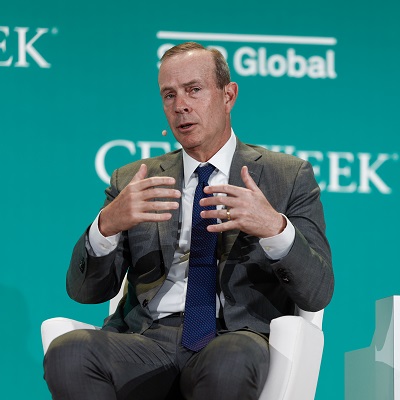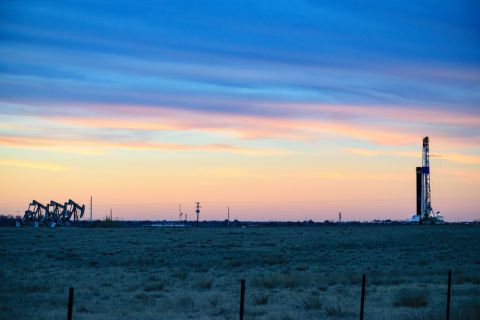HOUSTON—Energy markets faced extreme volatility during the first year of Russia’s invasion of Ukraine, but the war will have long-lasting effects on natural gas markets, in particular, Chevron Corp. Chairman and CEO Mike Wirth on March 6.
“Gas markets, I think, are structurally changed for the longest,” Wirth said during an onstage discussion at CERAWeek by S&P Global. “I don’t think Europeans intend to go back to their reliance on Russian gas.”

Wirth also said Chevron still intends to hit its ambitious Permian Basin production goals but acknowledged that supplies and labor challenges remain a challenge.
Competition between European and Asian buyers for liquefied natural gas in the past year and new LNG export projects coming online in the U.S. also have wide-reaching impacts on global gas markets, he said.
“It changes trade flows, it changes pricing mechanisms, it changes product economics globally,” Wirth said.
As European nations search for reliable, long-term gas supply, gas resources in the eastern Mediterranean, including Chevron’s footprint in the Leviathan gas field offshore of Israel, could grow in importance, Wirth said.
The Leviathan Field could serve as a major gas resource for Europe, but investment in new infrastructure will be needed to transport gas from the eastern Mediterranean to European markets.
RELATED
Cyprus, Chevron Press Ahead with Offshore Gas Field Development
The global oil markets have also seen its price structure change since Russia’s war in Ukraine started last year. But as Russian crude continues to find its way to buyers, oil markets have been impacted less drastically than gas markets, Wirth said.
Markets for refined products should also come back into a more balanced equilibrium this year, he said.
Permian conditions are ‘challenging’
Domestically, Wirth reiterated Chevron’s goals to scale oil and gas production in the Permian Basin up to 1 MMboe/d by 2025. Last year, Chevron’s average production in the Permian was over 700,000 boe/d.
RELATED
Chevron Reiterates Permian’s 2025 Growth Target Despite Delaware ‘Falling Short’
However, rampant inflation and supply chain constraints continue to present issues to oil and gas operators in the Permian, Wirth said.
“Access to both equipment and people is challenging, but we’re progressing our plan,” Wirth said.
Recommended Reading
Marketed: Wayfinder Resources, KSE Minerals Five Well Package in Oklahoma
2024-05-13 - Wayfinder Resources Operating and KSE Minerals has retained EnergyNet for the sale of a Mississippian/ Woodford opportunity in Canadian County, Oklahoma.
Marketed: DLH Capital 14 Well Package in SCOOP/STACK
2024-05-06 - DLH Capital LLC has retained EnergyNet for the sale of a 14 well package SCOOP/STACK opportunity in Blaine, Caddo, Canadian and Grady counties, Oklahoma.
Marketed: Excess Energy 207 Well Package in Austin Chalk, Eagle Ford Shale
2024-06-04 - Excess Energy has retained EnergyNet for the sale of a Austin Chalk and Eagle Ford Shale, 207 well package in La Salle and Webb counties, Texas.
Crescent Point Divests Non-core Saskatchewan Assets to Saturn Oil & Gas
2024-05-07 - Crescent Point Energy is divesting non-core assets to boost its portfolio for long-term sustainability and repay debt.
Permian Resources Adds More Delaware Basin Acreage
2024-05-07 - Permian Resources also reported its integration of Earthstone Energy’s assets is ahead of schedule and raised expected annual synergies from the deal.


